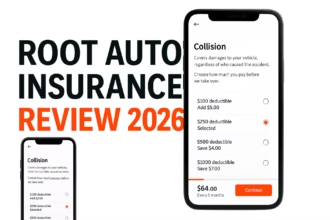Quantitative bond investing utilizes mathematical and statistical models to systematically identify opportunities and exploit inefficiencies in fixed income markets. By removing human emotion and employing data-driven analysis, quantitative strategies aim to generate consistent risk-adjusted returns across diverse market conditions. This guide provides an in-depth look at the key concepts, strategies, models, and techniques used in quantitative bond investing.
Overview of Quantitative Bond Investing

Quantitative bond investing represents a rules-based, systematic approach to fixed income investing. It involves analyzing interest rates, yield curves, credit spreads, and other bond market dynamics using statistical and econometric models. The models identify mispriced securities based on historical data patterns and relationships.
The key aspects of quantitative bond investing include:
- Reliance on mathematical models and algorithms rather than human discretionary decision making
- Data-driven analysis of fixed income price movements, yields, curves, spreads, volatility and correlations
- Systematic execution of trades once opportunities are identified by the models
- Risk management techniques and diversification to optimize risk-adjusted returns
Quantitative bond investing aims to construct diversified, liquid portfolios that can potentially deliver consistent returns in excess of benchmarks. It uses backtesting to determine the viability of strategies before actual deployment. The approach combines aspects of both passive and active bond investing to benefit from factor exposures while still seeking alpha.
Analysts and portfolio managers deploying quantitative strategies require expertise in bonds, mathematics, statistics, programming, and econometrics. Many quant bond investors are PhDs or have advanced degrees in finance, economics, or the quantitative sciences.
READ ALSO: Investing in Bonds for Beginners: A Simple Guide to Bond Basics
Benefits of Quantitative Bond Investing
Adopting a quantitative approach to bond investing provides several advantages:
- Systematic methodology: Strategies are based on defined, rules-based models rather than individual human judgement. This provides consistency in decision making.
- Potential to exploit inefficiencies: Models can rapidly analyze vast amounts of data to identify mispricings and opportunities.
- Risk control: Strategies incorporate quantitative risk models and optimization to construct diversified portfolios.
- Lower costs: Automated trading execution and passive strategies lower transaction costs.
- Transparency: The rules and models used are fully specified and backtested. Strategy performance can be monitored and evaluated.
The data-driven, unemotional nature of quantitative bond investing makes it well-suited for institutional investors seeking stable returns. Pension funds, endowments, family offices, and others have embraced quantitative fixed income strategies.
Major Quantitative Bond Investing Strategies
Many quantitative bond investing strategies exist, but some of the most common include:
Yield Curve Strategies
These aim to capitalize on changes in the yield curve’s shape by taking long and short positions. Common yield curve strategies are:
- Curve Steepening: having long, longer-term bonds and short, shorter-term bonds to benefit from an upward sloping curve.
- Curve Flattening: There are short, longer-term bonds and long, shorter-term bonds when the curve may flatten.
- Butterfly Spread: Combination trade benefiting from a parallel shift in the mid-curve section of the yield curve.
Quant models identify when the yield curve is mispriced relative to historical regimes. Trades are executed when high-probability opportunities arise.
Duration Timing Strategies
These change a portfolio’s duration exposure to benefit from interest rate changes. Key strategies are:
- Directional Duration Calls: Increase portfolio duration when rates are expected to fall.
- Contrarian Duration Calls: Lower duration when consensus expectation is for lower rates.
Rate expectations are quantified using econometric models of central bank policies, inflation dynamics, and other economic indicators.
Credit Strategies
These look to capitalize on mispricings in credit spreads and excess returns attributable to credit risk factors. Examples include:
- Credit Curve Trading: Relative value trades exploiting spreads across credit curve.
- Credit Rating Arbitrage: Long high-yield, short high-grade bonds when spread differential is attractive.
- Fallen Angel Investing: Buying bonds downgraded from investment grade to high yield.
Models assess probability of default, expected recoveries, liquidity risk and other drivers of credit spreads.
Mortgage-Backed Securities Arbitrage
Spreads between agency and non-agency MBS are traded when quant models identify pricing discrepancies. Prepayment model differences are key drivers.
Statistical Arbitrage
Price discrepancies between highly correlated bonds are identified using cointegration models and other statistical techniques. Pairs trading is a common approach.
READ ALSO: Understanding US Tax Rules for Investment Bonds: A Guide for Investors
Key Models Used in Quantitative Bond Investing
Successful implementation of quantitative bond investing strategies relies on robust econometric and financial models. Some key models include:
Interest Rate Models
These model the dynamics of interest rates, usually using stochastic calculus. Common examples are:
- Vasicek Model: This model models interest rate mean reversion around a long-term level.
- CIR Model: Adds a non-negative rate constraint to the Vasicek model.
- Hull-White Model: Models time-varying rate volatility and mean reversion.
Rate model outputs are used to price bonds and derivatives and identify mispricings.
Yield Curve Models
Yield curve models describe the evolution of the term structure of interest rates. They are key for yield curve trades. Models include:
- Nelson-Siegel Model: Parametric model describing yield curve shape.
- Svensson Model: Extension of Nelson-Siegel with additional shape parameters.
- Dynamic Nelson-Siegel: Makes parameters time-varying to model curve dynamics.
Credit Risk Models
These estimate the probabilities of default and credit spreads for corporate bonds based on firm-specific and macro factors. Examples are:
- Merton Model: Models company equity as a call option on assets to determine default risk.
- Transition Matrix Models: Use the matrix of credit rating transitions to estimate rating migration.
- Reduced-Form Models: Model default as an exogenous, random event described by default intensity.
Prepayment Models
Critical for modeling the expected prepayments of mortgages underlying MBS. Examples:
- PSA Model: Early industry standard for prepayment rates.
- CPR Models: Models Conditional Prepayment Rate as a function of rates, burnout, and seasonality.
- Machine Learning Models: use computational algorithms on loan-level data.
Risk Management for Quantitative Bond Investing
Thorough risk management is crucial when deploying leverage and complex quantitative bond strategies. Key risk management techniques include:
- Diversification: Investing across sectors, credit ratings, regions, and instruments diversifies specific risks.
- Position Sizing: Appropriately size positions based on risk models and portfolio constraints.
- Hedging: Use instruments like Treasury bonds, swaps, and options to hedge risks.
- Stop-losses: Systematically exit losing trades at pre-defined loss thresholds.
- Stress Testing: Evaluate the performance of strategies under adverse scenarios.
Risk should be viewed holistically across the entire portfolio, not just individual assets. Tail risks must also be incorporated.
Implementation of Quantitative Bond Strategies
To successfully implement quantitative bond investing strategies, several elements must be in place:
- Experienced Team: Requires specialized expertise in quantitative finance, programming, statistics, econometrics, and bonds.
- High-Quality Data: Strategies are dependent on accessing accurate, cleaned bond data sets from multiple sources.
- Robust Technology Infrastructure: Computing power, advanced algorithms, and specialty software are needed for data management, modeling, and trade execution.
- Trading Capabilities: For active strategies, efficient fixed income trading capabilities are essential for gaining an edge.
- Portfolio Construction Skills: Blending models, securities, and risk factors in an optimal manner is key.
- Discipline: Strictly adhering to strategy, even during periods of underperformance, takes conviction.
Significant investments in human talent, data systems, and technology are required. A disciplined process must be followed even when market conditions are unfavorable.
To Recap
Quantitative bond investing represents a sophisticated, analytical approach to fixed income portfolio management. By using mathematical and statistical models, it seeks to lower portfolio risk while exploiting inefficiencies to enhance returns.
Major strategies focus on yield curve trades, duration timing, credit arbitrage, and mortgage-backed securities. Key models include interest rate, yield curve, credit risk, and prepayment models. Effective implementation requires specialized expertise, high-quality data, robust technology infrastructure, and disciplined adherence to strategies.
While not a panacea, quantitative bond investing provides investors with an innovative set of tools for managing fixed income portfolios. As computing power grows and data availability increases, quantitative bond strategies are poised to become even more prominent in the years ahead.
Frequently Asked Questions
What are the main advantages of quantitative bond investing strategies?
The main advantages are the systematic rules-based approach, potential to exploit inefficiencies, risk control through diversification and modeling, lower costs than active management, and transparency of the models used.
What are some common quantitative bond investing strategies?
Common quantitative bond strategies include yield curve trades, duration timing, credit arbitrage, mortgage-backed securities arbitrage, and statistical arbitrage using models to identify mispricings.
What types of models are used in quantitative bond investing?
Key models include interest rate models, yield curve models, credit risk models, prepayment models for MBS analysis, and advanced machine learning techniques.
What risks are associated with quantitative bond investing?
Key risks are model risk, data problems, over-optimization, illiquid instruments, crowded trades, leverage, and regime shifts that models fail to capture. Robust risk management is essential.
What are the main implementation challenges of quantitative bond strategies?
Challenges include finding specialized talent, procuring high-quality bond data, developing complex technology infrastructure, efficiently executing trades, and having discipline in portfolio construction.
What skills are required to be a successful quantitative bond portfolio manager?
Required skills include expertise in quantitative methods like econometrics, programming for modeling, data science, trading, portfolio construction, and a deep knowledge of fixed-income securities and markets.
In another related article, The Top 5 Investment Grade Bond Index Funds for Your Portfolio





